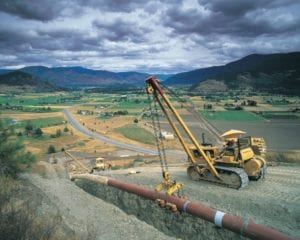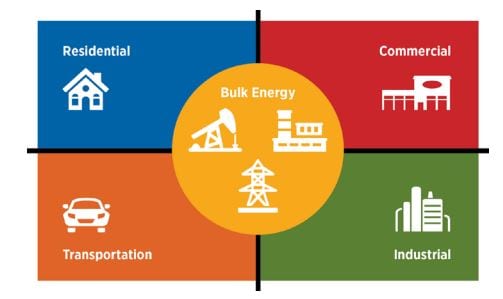Natural gas and renewable energy each contribute to economic growth, energy independence, and carbon mitigation. Sometimes they do so independently, but now many of these sectors are working together. Synergies between natural gas and renewable energy are found to exist at multiple levels: hybrid systems that optimize assets, like smart buildings with both photovoltaic (PV) and natural gas combined heat and power (CHP) systems, and transmission corridors that serve both technologies.

From carbon emission to misconceptions about spills, pipelines can have negative press when it comes to the environment, but the truth is that pipelines are one of the safest ways to transport the oil and gas we depend on. Pipelines transport natural gas and liquid hydrocarbons, such as oil, from supply basins to various areas where they are used to heat homes and businesses, provide fuel for our cars, and manufacture items for our daily lives, all in a way that helps to support green energy and the environment.
Lowers Carbon Emissions
Increased use of natural gas is helping to combat climate change by lowering carbon dioxide emissions. While U.S. gas production is up 37% since 1990, greenhouse gas emissions are down 17%.
Greenhouse gases and carbon emissions can occur naturally and be created through human activity, including industrial processes. These gases impact our planet in many ways, from the temperature of the oceans to the amount of rainfall and snow we get.
There are two main ways natural gas pipelines emit greenhouse gases: from burning fossil fuels at compressor stations and methane from small leaks or maintenance activities. To transport gas over long distances, natural gas pipeline operators use compressor stations with turbines and engines to push the products through the pipeline; this process emits carbon dioxide and nitrous oxide. Companies use a variety of techniques to limit the amount of greenhouse gases released, including upgrading equipment to be more energy-efficient and adopting technologies that divert or capture the release of natural gas during maintenance.
Better Than Trucks, Trains, and Ships
The pipelines that bring natural gas throughout the U.S. ensure the resource reaches homes and businesses without truck, train, or ship emissions. In the U.S., 70% of crude oil and petroleum products are shipped by pipeline, 23% of oil shipments are on tankers and barges over water, 4% of shipments are on trucks, and a mere 3% is via rail.
It’s also important to remember that pipeline spills are rare. Every day, millions of barrels of crude oil are moved by transmission pipelines in the U.S., and between 2002 and 2013, 99.9995% of the liquid product transported by our member companies was moved safely. From new technology and techniques to increased safety measures, pipelines are proving to be the safest and most efficient way to transport oil and gas.


